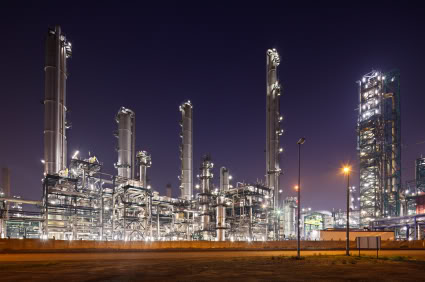ALL4’s: Is That Your Final Answer?
Last Month’s Answer and Winner:
Proving that there is a core following of the “Is That Your Final Answer” questions, the first two respondents to our October question were repeat winners. But following the first two respondents by mere minutes was Ursula Lofton of Hyundai Motors and thus she becomes our 10th winner eligible for the December year-end drawing for a $500 American Express Gift Card. Ursula correctly identified Cycle4ward as the ALL4 sister company providing waste repurposing and alternate fuel services to our industrial clients. Congratulations to Ursula and thanks to all of those who participated.
Question:
Well we are down to the final two questions for this year’s “Is That Your Final Answer.” And for November’s question, we begin by apologizing to America’s poet laureate Mr. Philip Levine for our meager attempt at the most basic form of rhyme, the limerick. Our limerick describes equipment that is likely present at more than 95% of our clients’ facilities. What is the piece of equipment described below?
For weeks it will sit unattended
Only used while a boiler is mended
While the RICE does apply
Applicability slides by
With no permit obtained as intended
For a hint, see the January 2011 4 The Record article written by Ron Harding. Good luck!
Answer:
Please e-mail your answer to final.answer@all4inc.com. Include in the e-mail your name, answer, and address (to receive your prize).
The final answer feature of 4 The Record is designed to test your knowledge across the environmental field, quiz you on the building blocks of air quality rules, stump you on ALL4 general trivia, and challenge you with brain teasers that have perplexed us. The first correct answer e-mailed to us will qualify the respondent for free ALL4 gear and will enter the winner in our end-of-the year “Final Answer Championship.” The subsequent month’s 4 The Record will identify the winner and the correct answer from the previous month’s question. You must be an active subscriber of 4 The Record to win a monthly prize and be eligible for the championship prize. ALL4 employees and family members are not eligible to compete. Hope you enjoy this feature and good luck!
More Thoughts on SO2 NAAQS
The public comment period for U.S. EPA’s draft dispersion modeling guidance for the 1-hour sulfur dioxide (SO2) National Ambient Air Quality Standard (NAAQS) is open until December 2, 2011. Since the guidance will lead to a significant and complicated undertaking in performing dispersion modeling for a wide range of facilities, it is anticipated that many states and industrial facilities will submit comments, many of which will focus on determining which facilities should be included in the modeling
demonstration. U.S. EPA’s timing on processing comments and submitting a final guidance document needs to allow for the preparation and state submittal of dispersion modeling by June 2013. Most state agencies are still digesting the guidance and
preparing comments, and many are awaiting final guidance before formalizing which facilities will be modeled and how the modeling will look. ALL4 has been involved with strategic modeling in preparation for the NAAQS implementation process. Ambient air
boundaries (the distance between modeled sources and receptors), building downwash,
and topography have all been observed to result in substantial differences in modeled concentrations when comparing facilities against one another (specific facilities will all have a unique combination of factors driving modeled concentrations).
Stay tuned for more updates in December and beyond on the status of U.S. EPA’s NAAQS modeling guidance.
Carbon Capture and Sequestration Deemed Not Cost Effective by DOE
Since the beginning of 2011, major sources of greenhouse gas (GHG) emissions that trigger Prevention of Significant Deterioration (PSD) permitting have been required to implement Best Available Control Technology (BACT) for GHG emissions from new and modified sources. A recent announcement by the U.S. Department of Energy (DOE) and a study by the Global Carbon Capture and Sequestration Institute (GCCSI) support claims that carbon capture and sequestration is not a cost-effective option for BACT for common 
Comment Period Extension for Proposed Oil and Gas NSPS/NESHAP Revisions
In an October 28, 2011 Federal Register announcement, U.S. EPA extended the comment period for the proposed revisions to both the Standards of Performance for New Stationary Sources (NSPS) and National Emission Standards for Hazardous Air Pollutants (NESHAP) for the Oil and Gas sector. The proposed revisions impact the following regulations:
- 40 CFR Part 60, Subpart KKK – Standards of Performance for Equipment Leaks of VOC From Onshore Natural Gas Processing Plants
- 40 CFR Part 60, Subpart LLL – Standards of Performance for Onshore Natural Gas Processing: SO2 Emissions
- 40 CFR Part 63, Subpart HH – National Emission Standards for Hazardous Air Pollutants from Oil and Natural Gas Production Facilities
-
40 CFR Part 63, Subpart HHH – National Emission Standards for Hazardous Air Pollutants from Natural Gas Transmission and Storage Facilities
Numerous requests for an extension to the comment period have been received by U.S. EPA. Consequently, the comment period has been extended to November 30, 2011. A 
Stay Tuned…Again
In two separate announcements made during the last week of October, U.S. EPA has delayed the release of two highly anticipated maximum achievable control technology (MACT) regulations. U.S. EPA announced that it would be delaying the release of the proposed new changes to the major source Boiler MACT until the end of November, and that it would be delaying the release of the final Utility MACT until mid-December.
U.S. EPA is currently “reconsidering” the major source Boiler MACT rules to address criticisms and comments received from industry, states, and environmental organizations. The major source Boiler MACT will regulate emissions of hazardous air pollutants (HAP) from boilers and process heaters located at sources classified as “major” sources of HAP emissions. The one-month delay in the release of the proposed changes to the major source Boiler MACT is said to be a direct result of the number of comments received, and an abundance of new data and new emissions test results that U.S. EPA is reviewing. The proposed new major source Boiler MACT rules are expected to be released no later than November 30, 2011.
The U.S. District Court for the District of Columbia has granted a request by U.S. EPA for a 30-day extension to its consent decree deadline for issuing the final Utility MACT. The Utility MACT will regulate emissions of 


